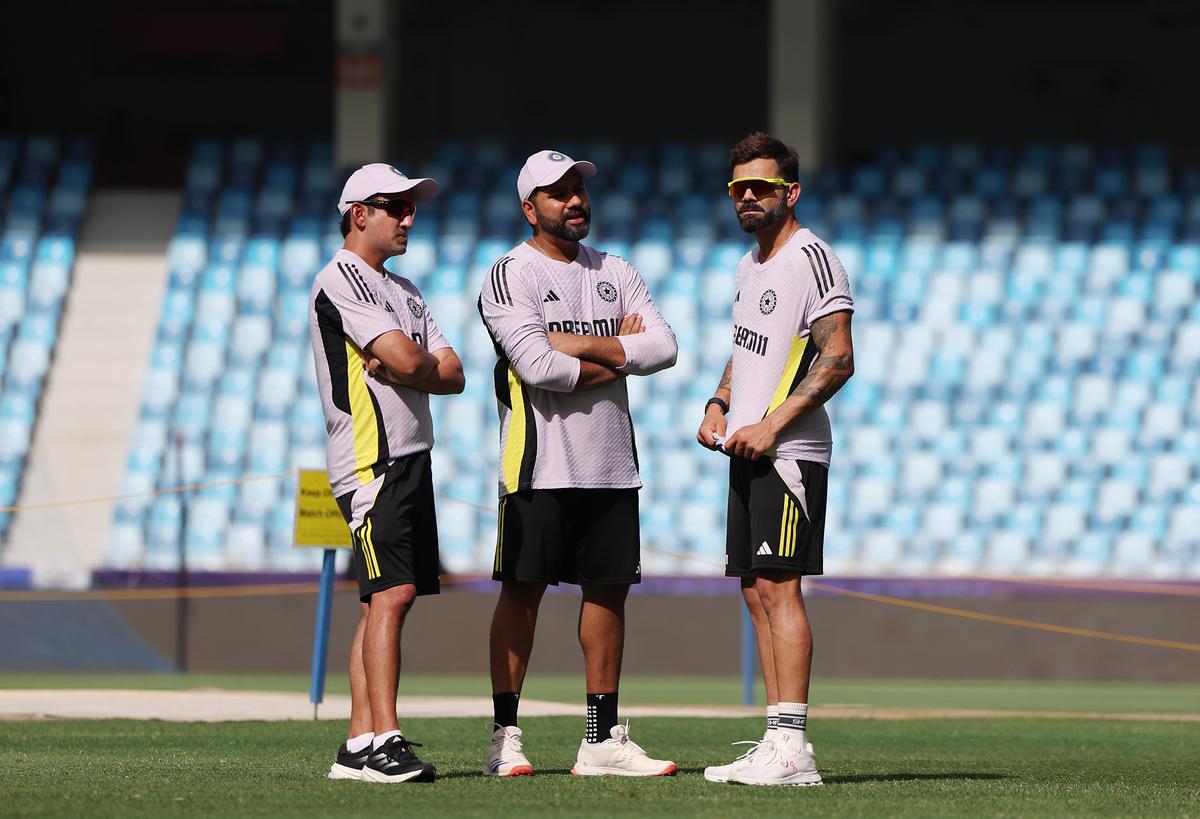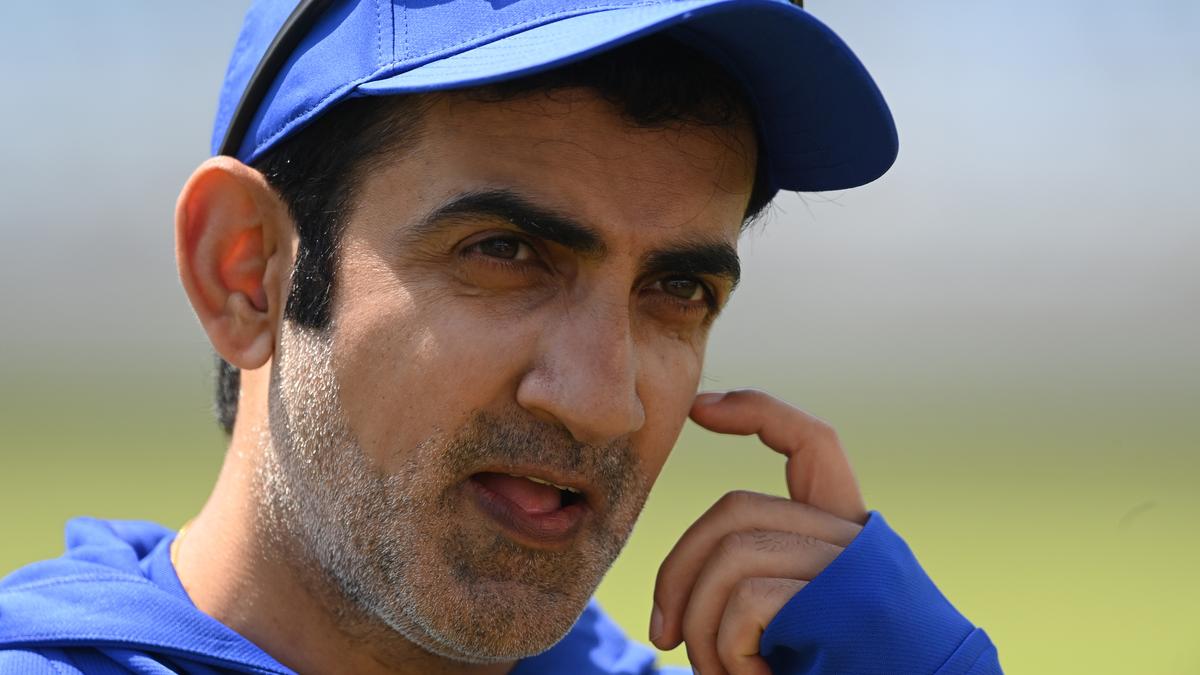In the metamorphosis of cricketers, the way they are remembered becomes a product of recency bias. In their prime, Ravi Shastri and Navjot Singh Sidhu were gutsy players, but for the modern generation, they are just commentators. Shastri, though, has an added layer of being a former coach.
Equally, Gautam Gambhir has to deal with such quirks in public memory. The Indian cricket team’s coach was an effective opener in his heyday, albeit over-shadowed by Virender Sehwag, Rahul Dravid, Sachin Tendulkar, V.V.S. Laxman and Sourav Ganguly.
ALSO READ | Open and shut case: Jaiswal and Rahul making headway as a partnership at the top
Owning the big stage
Gambhir had his splendid days too, evident in his 436-ball 137 that secured a draw against New Zealand at Napier in 2009. And both in the 2007 ICC World Twenty20 and 2011 ICC World Cup finals, he was the top-scorer for a triumphant India. Deep inside, he still feels that he never got the credit, as skipper M.S. Dhoni gained the accolades.
We did it: The ICC Champions Trophy triumph earlier this year was a moment Gambhir clearly enjoyed.
| Photo Credit:
Getty Images
The fiery southpaw had a slow descent as his form waned, but in the Indian Premier League, he led Kolkata Knight Riders to titles in 2012 and 2014. Having nursed captaincy ambitions at the highest level, perhaps the IPL forays helped to partially assuage that simmering angst.
The microscope trained on Gambhir then got coated with a political lens as he shifted to Parliament. He may have moved on from that phase, but in the perennial ideological churn seen in India, judgements on him are often influenced by the political underpinnings of the larger public.
These diverse strands of perception clung to him harder when he was appointed coach of the Indian team in July last year. He was also stepping into a space earlier occupied by Dravid and Shastri. Dravid, ever conscious about his public image, and Shastri, with years of commentary experience under his belt, knew how to position themselves.
It also helped that Shastri forged a bond with Virat Kohli, and Dravid found a kindred spirit in Rohit Sharma. A coach in synergy with the captain always helps, especially in Indian cricket, which had its horror phase when Greg Chappell and Ganguly had their falling-out.
Gambhir was saddled with the onerous task of shepherding a unit in the throes of transition, while also dealing with the larger-than-life aura around talisman Kohli and skipper Rohit. It was never easy. Old videos of his run-in with Kohli in a heated IPL clash resurfaced, but the two handled the issue well. This was the cynical universe Gambhir stepped into, with a thinking hat and a lingering scowl.
ALSO READ | Sai Sudharsan: ‘It was clear that we were in England to create history’
As a year at the helm ends, Gambhir has had a roller-coaster ride at the top. In his initial days as national coach, India won the T20I series in Sri Lanka 3-0, but lost the subsequent ODI jousts 0-2. It was also a tour that revealed the diverse paths that India would traverse even within the blue shade but split between ODIs and T20Is.
Suryakumar Yadav led in T20Is and Rohit was the captain in ODIs. Gambhir had to recalibrate his communication lines. Back home, the coach found easy pickings in the Tests against Bangladesh and a 2-0 victory was etched. But the knives were sharpened when host India lost 0-3 in the Tests against New Zealand.
The old dirge about Indian cricket being on a downward spiral played out. Gambhir’s role and his judgement of pitches were questioned. India may have this image of being a fortress at home, but there have been occasions in the past when visiting sides have emerged on top. Yet, in this age of toxic social media and emotional television anchors, neutrality and nuance are vanishing traits.
Whispers of unease
Even as ODIs and T20Is were won, the next big hurdle was the tour of Australia. By then, whispers of unease between Test leader Rohit and Gambhir had surfaced. There was mutual respect and both had played together for India in the past, but just like Kohli missed Shastri, Rohit felt Dravid’s absence.
Meanwhile, Gambhir was trying to forge a squad that reflected his persona. Expending every ounce of energy on the field, verbal skirmishes on and off it, and sharp words for the media became par for the course. Still, India lost the Border-Gavaskar Trophy 1-3, and this after starting its campaign well.
ALSO READ | Injuries are a part of cricket; injury substitutes are unnecessary
It was a tour that brought the curtains down on three storied careers. A trip Down Under does that at times as Dilip Vengsarkar, Dravid and Laxman would testify. As the 2024-25 series progressed, R. Ashwin announced his retirement. After the dust seemed to settle, it was Rohit’s turn, with the captain dropping himself for the final Test. It was a matter of time before he announced his retirement from Tests; and Kohli followed suit.
Gambhir, prone to holding all the cards close to his chest, had insisted that the best playing eleven would take the field ahead of that last game in Sydney. And as Rohit made way for Jasprit Bumrah to lead again, the winds of transition were clear.
The coach has had his sunshine moments too, when in the ODIs, a resurgent Rohit guided India to a title win in the ICC Champions Trophy final against New Zealand at Dubai in March.
Even as Gambhir sought to carve his own path, the iconic status bequeathed to Kohli and Rohit was a factor he had to accept. But once the duo quit Tests, finally the coach had a bunch of players on whom he could leave an imprint, as India flew to the Old Blighty.

Handling superstars: Gambhir has the tricky job of dealing with the impending twilight of Rohit Sharma and Virat Kohli in ODIs.
| Photo Credit:
Getty Images
It also helped that expectations around the side, led by Shubman Gill, were a notch low. But when the tour concluded on August 4 at a raucous Oval, India had charged back to level the series 2-2.
This could well be the tipping point for Gambhir, the coach. The shadows of Kohli, Rohit and Ashwin are no longer there even if the first two are still available for ODIs. In Gill, K.L. Rahul, Yashasvi Jaiswal, Rishabh Pant, Bumrah and Mohammed Siraj, the coach has a fine nucleus in Tests.
ALSO READ | What to expect in this Premier League season?
Festering issue
Gambhir’s anger-management remains a festering issue as obvious in his tiff with the Oval curator Lee Fortis. But this is how he is, like Steve Waugh, preferring the entire world to be against him. With his back to the wall, Gambhir springs forward. His team did the same through the England tour. And he does smile too, a rare sliver of joy on an otherwise grim visage.
As a player, he had the respect of his legendary peers. Now as coach, Gambhir is seeking permanence in Indian cricket’s list of influential figures. He has a young team to mould and results to chase. There is also the tricky bit of dealing with the impending twilight of Kohli and Rohit in ODIs. Gambhir has a long road ahead and, as he prefers battle metaphors, surely the angry warrior in him is wide awake.
